Alfa Romeo 2000 Reviews
You'll find all our Alfa Romeo 2000 reviews right here. Alfa Romeo 2000 prices range from $2,640 for the 2000 Berlina to $4,180 for the 2000 Berlina.
Our reviews offer detailed analysis of the 's features, design, practicality, fuel consumption, engine and transmission, safety, ownership and what it's like to drive.
The most recent reviews sit up the top of the page, but if you're looking for an older model year or shopping for a used car, scroll down to find Alfa Romeo dating back as far as 1972.
Or, if you just want to read the latest news about the Alfa Romeo 2000, you'll find it all here.
Alfa Romeo Reviews and News
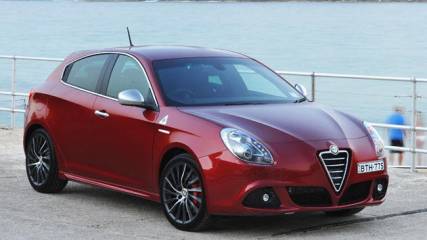
Alfa Romeo Giulietta 2011 review
Read the article
By Philip King · 29 Jan 2011
ALFA Romeo is one of those brands that seems to promise a lot but deliver little. It has pedigree and tradition; it's been around 100 years and has racing written into its DNA. It used to make cars of sensual beauty, full of fizzy exuberance. Like Berlusconi parties on wheels.The 156 was like that. I still check the classifieds for a pre-loved sedan or wagon when the urge to buy is overwhelming. I know it would put me on first-name terms with the local mechanic, but the gorgeous leather seats alone are worth the price of entry.My irrational longing has struggled with more recent cars. Flawed is one thing, but the 156 replacement, the 159, was simply flabby and that was unforgivable, even though it was a looker.The Mito, a tiny hatchback based on the Fiat Punto, doesn't do enough to disguise its origins in the cheaper car. It looks like a hasty attempt to get something out there, rather than a proper Alfa.There's worse, because as often as not Alfas have simply failed to appear at all. There's been no replacement for the 166, the patrician flagship that passed on a few years ago, neglected and alone. An on-again, off-again SUV has never been on-again for long enough to materialise.The GT went and left a gap. The 159, Brera and Spider have either gone, or are about to. A sign of how long we might be waiting for their successors comes in the shape of the Giulietta, which replaces the 147. It has only just arrived, although the 147 has been on sale for a decade. That's a lifetime in the small car market.The GM tie-up ended happily for Alfa's parent Fiat, which got $US2 billion from the divorce settlement. Then there was a brief spell when Fiat was single. Even the GM money wasn't enough to keep its entire stable of brands pumping while simultaneously mending its balance sheet.Discount the Mito, and I do, and the Giulietta is the only real Alfa developed for ages.Now Fiat is back in a relationship, this time with Chrysler. So it's also back to shared platforms that must work for all sorts of different cars. The next Alfa off the drawing board should be the Giulia, the replacement for the 159, although no one's entirely sure when that will appear. Or how much Chrysler baggage it will be carrying.DESIGNThe Giulietta revives a favourite nameplate for the brand that will stir memories among those too doddery to drive if they still have any memory left. For most potential buyers, it will mean nothing at all. But the return of a Giulietta should, by rights, be worth waiting for.It starts in an unpromising fashion by adopting a similar design to the smaller Mito, which looks like a startled lemur. The Giulietta is better, because it's only mildly surprised, but there's still an absence of aggression. Luckily, its rear end is fabulous, especially with the distinctive LEDs switched on.VALUEThe Giulietta enters premium small car territory around the level of the more expensive Volkswagen Golfs, or the cheaper Audi A3s and BMW 1 Series. When the 147 appeared this was a much less competitive segment than it is now.Happily, the Giulietta has been equipped for the task. It has new underpinnings with proper independent rear suspension, hi-tech turbocharged four-cylinder engines and a decent amount of kit.Inside, there's some Italian flair to separate it from the sombre Germans. There are big fat aircon controls, deep-set dials and the retro detail de jour: toggle switches. There's just enough shiny bits to make it feel premium. And unlike in previous Alfas, you don't need to sit with knees crunched to your chest to reach the wheel.There's evidence of engineering care also in the thinness of the A-pillars, which allow vision through corners. The B-pillars, however, are so wide they can hide three lanes of traffic when turning right.It's also a shame that the seats are covered mainly with something called microfibre, even when they're supposedly "leather". They're nowhere near as inviting as they used to be and the average Italian must have put on weight, because they're too wide.DRIVINGAt least, at about 1300kg, the car itself isn't obese. It goes around corners with an eagerness that I don't recall in an Alfa since the 147. The chassis feels keen and alert and refuses to be fazed by mid-corner bumps. Alfa has also remembered to make the steering quick, the gearbox pleasing and the clutch vague, so it feels exactly like it should.At least it does in the 1.8 turbo, or QV as Alfa likes to style its "cloverleaf" editions. It gets the flashier wheels and is better tied down. The 1.4 gets along respectably enough, but the 1.8 has more character and lots more torque. That's reflected in a decent 6.8 second time to reach 100km/h. Which may be only a smidge quicker than a Golf GTI, but it's faster than any Audi or Beemer this sort of money will buy.VERDICTSo against the 1.4, it would be worth finding that extra five grand. That's if you haven't already bought a Golf GTI, which you probably have.If you haven't, you still won't be swayed by the 350 litres of cargo space, which can match a Golf, or Alfa Romeo graphs showing how many more large people can fit in the back. And if you want a dual-clutch transmission, rather than a six-speed manual, you'll have to wait until the end of the year. And then it's only on the 1.4.But if, in a fit of irrationality, you buy the Giulietta 1.8, you'll be getting something that the world hasn't seen for a while: a convincing Alfa. More's the point, we may not see its like again. The reason the 159 was too heavy was because it was a compromise, engineered to please both Alfa and General Motors. The engine bay needed to be strong enough to carry a Detroit V8.ALFA ROMEO GIULIETTAVEHICLE: Premium hatchbackENGINES: Turbocharged four-cylinders, 1.4-litre or 1.8-litreOUTPUTS: 125kW at 5500rpm and 250Nm at 2500rpm (1.4 TB); 173kW at 5500rpm and 340Nm at 1900rpm (QV)TRANSMISSION: Six-speed manual, front-wheel drivePRICE: From $36,990 (1.4 TB) to $41,990 (QV) plus on-road costsONSALE: Now
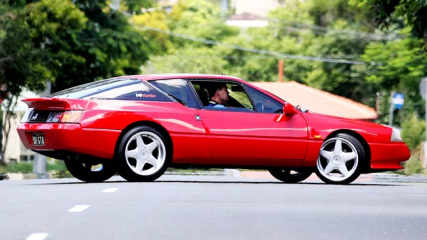
My Renault Alpine
Read the article
By Mark Hinchliffe · 28 Jan 2011
"I used to roll my pedal car down our long driveway with my feet up because the pedals would go too fast for me," says the 46-year-old electrician. I suppose that was the fun thing to do at that age."He graduated from pedal cars to real cars when his father bought him a 1977 XC Falcon ex-taxi. But what he really wanted was something more exotic.A few years later he bought a 1979 Alfa GTV for $7700 at auction and even though it had "rust like you wouldn't believe on a three-year-old car", Moore had become hooked on Euro-exotica."My neighbour had a lot of Renaults at the time, he says. "I liked the shape of his 15TS and the Alfa was sending me broke, so I decided to get one. He wouldn't sell me his, but I got one for $1800."The love affair with French cars, in particular Renaults, had begun Over the years he's owned a Peugeot 205 GTI, two Pug 405s, a 1973 BMW 2002 tii, a 1954 Renault 4CV, a 1989 Renault Alpine GTA Turbo and a 2005 Falcon BA Futura wagon as the daily driver. The Pugs have since been sold."Generally French cars are more comfortable and I guess I like to be a bit different," he says. "I appreciate well-made cars and given a few million dollars I'd own a lot of cars from other manufacturers, but four is enough for most of us."Moore bought the 4CV for $500 in 1992 and has since replaced the 749cc engine with a 1605cc donk from a Renault 16TS. Likewise, he is about to replace the 2458cc V6 engine in the GTA for a three-litre V6 from an early '90s Volvo 960.The 1988-plated engine was made under an alliance with Peugeot and Renault. The flexible engines were made from 1972 to the late '90s for use in either transverse or longitudinal engine bays in the front or rear mated to either rear-wheel-drive or front-wheel-drive.The original GTA model produced 154kW, but Moore has already fitted a bigger GT30 71R Garrett turbo that returns about 186kW. "With the new engine and bigger cams, valves and injector and depending on the boost I expect to get over 300hp (223kW)," he said. "I do all my own mechanicals and modifications except for wheel alignments and upholstery," he says.His interest in bigger engines stems from his amateur racing career in motorkhanas, hillclimbs and club sprints. He mainly uses the 2002 for race duties, but the Alpine will figure more prominently once he shoehorns in the bigger motor.Renault-owned French manufacturer Alpine produced 3400 GTAs in left-hand drive and only 343 in right-hand drive between 1986 and 1991.Moore bought his rear-engined right-hand-drive coupe for about $14,000 in 2004.Apart from the engine, the rest of the vehicle is all original, although he has replaced the wheels with AZEV 255/40 17s because tyres for the original 255/50 15s were too difficult to find and too expensive."It handles well," he says. "In slow corners it understeers and if you come on the boost mid-corner it will put its tail out a bit. "They say rear-engined cars don't handle ... someone forgot to tell Mr Porsche that."Moore also has a shed full of bikes in need of restoring. "I'll have to work until I'm at least 80 to pay for the things I've got to restore," he says.Allan Moore's garage:1989 Renault Alpine GTA Turbo2005 BA Futura Wagon1973 BMW 2002 tii1956 Renault 4CV1986 Honda TLR200 Trials1976 Yamaha XT5001974 Yamaha TY250A1972 Suzuki T5001970 Triumph Bonneville1968 BMW R60/21938 BMW R711937 Rudge Special
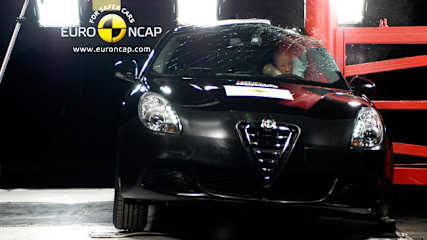
Giuletta voted safest small family car
Read the article
By Craig Duff · 28 Jan 2011
The European crash test body named five top cars, with the Kia Sportage judged best small off-roader, the BMW 5 Series sedan deemed best executive, the Honda CR-Z the best supermini and the Toyota Verso best small MPV.
The Suzuki Swift, Kia Venga, BMW X1, VW Sharan and Citroen C4 were also classified top performers. Last year, Euro NCAP crash tested twenty nine vehicles, with 65 per cent earning a five-star rating, compared to 90 per cent in 2009. Euro NCAP says the decrease in top marks clearly shows the criteria to reach a five-star score is now tougher.
To earn top Euro NCAP ratings, vehicles are now required to have electronic stability control systems as standard. ESC is meant to reduce the number of deaths resulting from crashes in which the driver loses directional control of the vehicle, including those resulting in vehicle rollover.
To be named a top achiever means the car achieved a high combined score based on the scores in each of the four areas of Euro NCAPs assessment, while notably exceeding the thresholds for a five-star overall rating. All of the top performers achieved an 80 per cent mark in the overall score.
The Landwind CV9's two-star racing and three stars for the Citroen Nemo made them the worst-performing vehicles in the 2010 Euro NCAP tests.
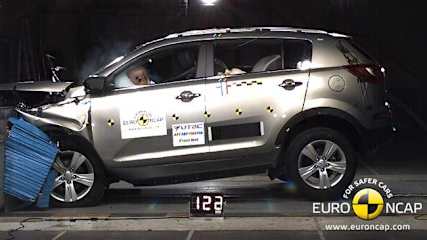
Euro NCAP's best performers of 2010
Read the article
By Mark Hinchliffe · 28 Jan 2011
A HYBRID sportscar, a model from the past, a Korean SUV, a luxury saloon and a car we won't get in Australia are the top performers in European safety tests.
Euro NCAP has announced the highest-scoring vehicles of 2010 in five categories. They are:
- Honda CR-Z (supermini category)- Alfa Romeo Giulietta (small family)- Kia Sportage (off-road)- BMW 5 Series (executive)- Toyota Verso (small MPV).
These vehicles not only scored a maximum five stars, but also scored high in four areas of assessment, exceeding the thresholds for a five-star overall rating.
The CR-Z hybrid sportscar is set for release this year, the Guilietta - a resurrected name of Alfa's past - has just been released here, the sixth-generation 5 Series is now complete with the introduction of a wagon, the Sportage was second in the Carsguide Car of the Year and Toyoa Australia says they have no plans to nitroduce the Verso.
Other top performers sold in Australia include the Suzuki Swift, BMW X1 and Citroen C4 which exceeded 80 per cent in overall scoring.
The worst results were achieved by two vehicles not imported into Australia; the three-star Citroen Nemo and two-star Landwind CV9 SUV from China.
Last year, Euro NCAP crash tested 29 vehicles, 65 per cent of which reached the five-star rating, compared with 90 per cent in 2009.
Euro NCAP boss Michiel van Ratingen says the 25 per cent decrease illustrates their criteria.
"The presence in these categories of high-performing five-star cars demonstrates car manufacturers' commitment to safety for all sizes of vehicles," he says.
Euro NCAP now also tests electronic stability control tests which from January 1 became mandatory in all vehicles sold in Victoria and is largely standard throughout vehicles sold across the nation.
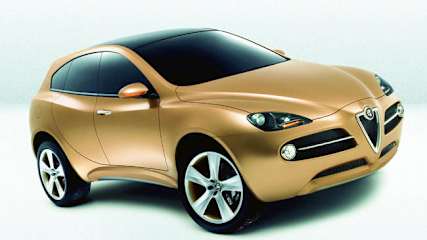
Alfa SUV on the cards
Read the article
By Mark Hinchliffe · 27 Jan 2011
The first 4WD off-road style Alfa was the 1900M built from 1952-54 for the Italian army to replace their jeeps.
However, the coming Alfa SUV will be a lot more luxurious and will not have a numerical identity. In keeping with Alfa's latest trend it will have a name. But it will not be called Kamal, the name given to the concept SUV that Alfa displayed in 2003. That name could be embarrassing in Australia for obvious reasons.
Edward Rowe, spokesman for Alfa importers Ateco Automotive, says that whatever it is called, the SUV is an "absolutely definite" for Australia.
"As a percentage share of the market 4WD/SUVs in Australia are very big," he says.
"And the premium SUV market is disproportionately larger than in other markets so to have this vehicle is important for us. We have already put our hand up for it."
However, the major intention of Alfa's drive into SUVs is to attack the US market.
"The plan is to return Alfa to the US and obviously you just can't be a player of any significance in the US market without having an SUV," Rowe says. "Alfa can go in with traditional cars, but to have a profitable dealer network they need players in sizeable sectors and one of the most sizeable in the US is SUVs."
Rowe says the Alfa SUV would have "a lot of luxury features".
"It's too early to talk about specifics other than to say it would match the features and equipment of existing Alfas, so you can expect to see a lot of handcrafted leather, advanced telematics and a very distinct Alfa character inside and out," he says.
The drive system will not come from the new Ferrari FF AWD, but will be an American system mated to Alfa's twin-clutch transmission which was originally designed not only for use in transverse front-wheel drives but also longitudinal 4WD installations.
Alfa and Maserati will use the new Jeep Cherokee platform to create separate SUVs. The Alfa will have a combination of four-cylinder and V6 petrol and diesel engines while the Maserati - introduced as a Kubang concept in 2003 - will have a V8 and the six-litre V12 from the Ferrari 599.
Rowe says the Alfa and Chrysler engines would be "high performance and high revving; suitable for the Alfa character". He believes the Alfa SUV will attract new buyers to the Italian marque.
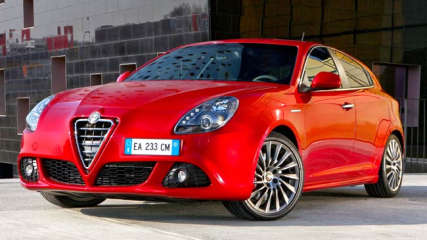
Alfa banks on Giulietta
Read the article
By Paul Pottinger · 18 Jan 2011
Widely praised in Europe where it was launched early last year, the Giulietta will not gain the Fiat Group's twin clutch TCT transmission until the third quarter of this year. Even then, the topline Quadrifoglio Verde (QV) remains manual only.
Alfa Romeo Australia general manager Andrei Zaitzev admits this is a particular obstacle for a direct competitor to Volkswagen's all-conquering Golf GTI in a market "where three from four buyers choose DSG", VW's version of the increasingly popular twin-clutch auto.
The Giulietta is nevertheless expected to sell 500 units this year, 350 of them being the entry-level 1.4 MultiAir, priced at $36,990 plus charges and options. The QV, with an impressive 173kW/340Nm 1.75-litre turbo petrol engine, is priced from $41,990. Zaitzev says a 2.0-litre diesel variant will arrive later in the year.
Though equipped with cutting edge Euro 5 compliant powertrains, the Giulietta's task of bolstering Alfa's flagging local sales a paltry 914 in 2010 is made more daunting by the local line-up being reduced to three model lines.
With the Spider convertible and Brera coupe in run out, there will remain only the Mito small hatch, the Golf-sized Giulietta and the 159 medium sedan and sportwagon.
Zaitzev says the company is "desperate for new product" but the 159's replacement, the Giulia, has been "pushed back until the 2012 and we won't see it before 2013," by which time the range will be eight years old. A much-needed SUV would be unlikely to see the light of day before that. Would this be of interest?
"Hell, yes," Zaitzev says. "You'd be mad not to participate in the sector of the market that grows consistently." Asked if such a gambit would diminish Alfa's image as maker of sporty cars, he says: "It would only erode its image to a very small number of people but introduce it the best selling segment."
The Giulietta is the replacement for the 11-year-old 147 hatch. Though bigger in all dimensions, it weighs in at 1242kg for the 1.4, 1320kg for the QV. The MultiAir returns a claimed 5.6 litres per 100km in combined running, the QV 7.6L.
The QV is distinguishable by its traditional four leaf clover badge, lowered suspension and dark 18-inch alloys. Both variants are well equipped with standard features including the Q2 electronic differential and the DNA selective drive switch that enables drivers to choose between dynamic, normal and all-weather modes.
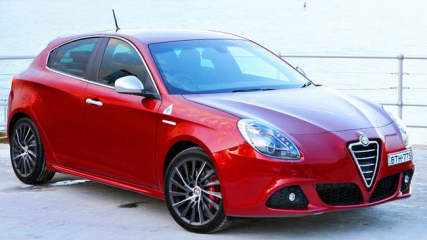
Alfa Romeo Giulietta 2011 review
Read the article
By Paul Pottinger · 18 Jan 2011
It’s a truism that the Alfa Romeos eulogized by the Alfisti, the marque’s hardcore fans, tend to be at least 40 years old.Sadly, for this was a once great auto house, the impact of recent Alfas has been minimal; 914 local sales in 2010 tell its own sad story. But then, apart from a few worthy variants of the unfairly overlooked 159, Alfa hasn’t deserved much better.Named for an old classic, the Giulietta, a medium hatchback that in Europe has been favourably compared with Volkswagen’s perennial Golf, represents nothing less than the most important car in the brand’s 101-year-old history. If it doesn’t succeed, Alfa Romeo sinks.No pressure then.The newcomer is remarkable for excelling in those areas recent Alfas haven’t, dropping the ball in one which Alfa usually has, but mainly in providing what few Alfas the past decade have so much as hinted at: substance.VALUETwo variants are available now, both with cutting edge turbo petrol engines. A diesel follows later in the year, as does a twin clutch automatic transmission.The sole gearbox to be going on with is a six-speed manual, which will retard sales as surely as if the cars all came painted pooh brown. Pity, because the engine transmission match is great.The 1.4 TB MultiAir retails at $36,990; the 1750 TBI with the famous Quadrifoglio Verde (QV) four leaf clover badge at $41,990. The latter stands visually apart for that prominent emblem, lowered suspension and dark 18-inch alloys.Both variants are well equipped with standard features including the Q2 electronic differential and the DNA selective drive switch that enables drivers to choose between dynamic, normal and all-weather modes.A premium pack (including radio/mobile controls on the steering wheel, folding door mirrors and parking sensors) is optional on the 1.4 and standard on the QV. So too is the sport pack with smokey alloys, 10mm lowered sports suspension, aluminum pedals, leather steering wheel and upholstery.TECHNOLOGYA tour de force. Or is that “forza”? Whatever, the latest DNA setting is no gimmick; all modes are genuinely unique and useful, though you’ll be poking the switch to dynamic at every opportunity. Optimum fuel consumption occurs in Normal, to which the Giulietta defaults when the ignition key is turned.Using turbo-charging, a twin overhead camshaft and direct injection, the 1750 TBi’s seemingly small capacity outstrips almost all four cylinder engines to obtain nigh on three litre performance for four pot economy. Using scavenging technology to make optimum use of the turbo charger, it produces its maximum 340Nm torque from only 1900rpm.The supposedly lesser engine is arguably more impressive; one Alfa claims is as important to petrol engines as the common rail it developed for diesels. An electro-hydraulic variable valve actuation technology controlling air intake, it produces 125kW and 250Nm, the latter from barely above idle, but emits only 134g/km.Propeller headed as all this appears, the result is instantaneous performance that belies capacity. The cost is measured in premium unleaded petrol.DESIGNSo fine without. So poor within.This is one great-looking, completely distinctive five door. Even better in the metal than on the page, there’s not an angle from which the Giulietta, especially the QV, doesn’t work.Coupe lines, accentuated by hidden rear door handles, mean quite some compromise in rear passenger space (do not option the panoramic roof if you intend to transport adults), but the days of Alfa’s driving position being for orangutans (ludicrously long of arm and stubby of leg) are over.What a weeping pity the interior design isn’t matched by materials of quality.Around the eye line, it’s not bad, but too many surface materials are substandard, even downright cheap. The switch controls are sweetly ’60s retro, but you don’t for a moment believe they won’t snap off at some point.In the QV, with its handsome leather thrones, the cut-price nature of the lower cabin plastics isn’t so obvious; in the MultiAir it’s glaring. Surfaces are too easily marked and give no confidence as to long term.In our 1000km-old QV, the bonnet release handle came off in our cameraman’s hand. In our MultiAir, the driver’s wing mirror pane vibrated not quite to the point of falling out. At this money things needs to be better. At half the money there is better. It makes me think long and hard about spending my money.SAFETY The good news resumes with best in class ratings in European crash testing. It’s down to fixtures including collapsible pedals and steering column, progressive chassis deformity, double front seatbelt pretensioners to curtail “submarining” and removing the need for driver’s knee airbag, and enhanced side impact protection.Add to this daytime running lights and the full raft of active safety acronyms. Go forth in confidence.DRIVING And when you do, rejoice in a choice of two such brilliant engines. The QV is almost atypically Alfa; controlled, composed and refined to the point of being inaudible. Where’s the fizz, the crackle, the brio?Some (any) aural indication would be welcome, because the QV can accelerate seamlessly from high gear at low speed to a license shredding extent and you’d hardly know it. Like the truly well sorted car it is, it seldom feels as fast as it’s travelling.Yet, more atypically, the ride is completely accomplished, even on 18s and lowered suspensions. Transferring torque to the front wheel with most grip, the electronic Q2 diff seems almost to claw you around corners. If you’re not horrified by the notion of changing gear for yourself, here’s a worthy rival of the all too common Golf GTI. It’s not better or worse as such, rather it’s of a different flavour, as though the hatch body was incidental and you are driving a five door compact grand tourer.Though the QV makes the 100km/h mark from standing a second quicker at 6.8, the MultiAir is its equal if not better, not least in terms of ride and getting the output it has to the tarmac. Can an Alfa be this indifferent to road irregularities? It has the composure of something bigger and softer, yet the intimacy and chuckability of something smaller and more fun. Super direct electro-mechanical steering abets the game.VERDICTAlfa gets there at last.ALFA ROMEO GIULIETTAPrice: $36,990 (MultiAir); $41,990 (QV)Engines: 1.4L 4-cylinder turbo petrol (125kW/250Nm); 1.75L 4-cylinder turbo petrol (173kW/340Nm)Transmission: 6-speed manual; front wheel driveThirst: 5.6L/100km (MultiAir); 7.6L/100km (QV)

Alfa Romeo MiTo TCT 2010 review
Read the article
By Craig Duff · 16 Dec 2010
The car Alfa Romeo needs to drive its on-road presence is finally on sale. The launch of the semi-automated twin-clutch MiTo TCT models comes 18 months after the manual's launch. That's a long time to wait for a car Alfa predicts will account for more than 70 per cent of sales."When we launched MiTo, the delay (on an auto) was going to be six months," Alfa's general manager Andrei Zaitev wryly recalls. "But it's here now and we think it's a major advance in the product and in transmission technology."The other major advance is the Euro V-compliant MultiAir engine. Fiat is following the VW Group's "smaller but smarter" engine strategy and this 1.4-litre unit uses only 5.5 litres every 100km while keeping the sound and sensations Alfa owners traditionally value in a car.VALUEThe Alfa's well kitted out on the spec sheet. The base TCT rolls on 17-inch alloys with cruise control, fog lights, Bluetooth and a decent audio system. It's $31,990, which puts it up against the likes of the Mini Cooper and Audi A1.Spend another $3000 and the TCT Sport adds auto wipers, rear parking sensors and a carbon-fibre finish to the dashboard. And red brake calipers, which obviously help you to stop faster.TECHNOLOGYThe twin-clutch transmission and Multi-Air engines are the standouts. The transmission is a dry-clutch unit that Alfa Romeo Spokesman Edward Rowe says was designed to deal with up to seven gears, 350Nm and four-wheel drive demands to suit the other arms of the Fiat empire.In the MiTo's case there's six cogs and three program maps for the automatic mode. Dynamic is the most responsive of the three and tries to adjust its shift points to your driving style. Manual changes are made by either pushing the gear lever left and flicking it up and down or by using the wheel paddles.Alfa repeatedly pointed out the new transmission will operate just like a conventional automatic, right down to the creep on idle. The majority of the time drivers will leave it in one of the auto modes anyway.The TCT is matched in the MiTo with a turbocharged 1.4-litre engine that is every bit as hi-tech. It uses a stop-start function at the lights as part of a fuel-efficiency focus and an electro-hydraulic set of solenoids to operate inlet valve lift and duration.It's smart and it works, with puts out 99kW and 190-230Nm depending on which map you've got the transmission in. Rowe says the same 1.4-litre engine is tuned to give 125kW in the range-topping MiTo QV.STYLEThe design is what sells Alfas and the looks of the latest MiTo haven't changed. That means its a stylish alternative for Mini shopper or those looking for a change from the baby Audis and BMWs.The three-door hatch is well built and the new transmission will have an undoubted appeal with women - a key target demographic. Alfa expects up to half its customers will be female because of the greater emphasis they place on style and individuality. The interior is well executed with logical controls in the right places and the seats are comfortable places to spend a few hours.SAFETYThe MiTo has already earned its five stars and comes with the full airbag and software intervention suite, but it is the fact the hazard lights flash during emergency braking that is most impressive. It's an increasingly common feature on European cars and the flashing lights certainly help grab other drivers' attention.THE MiTo is a five-star safety car, so no surprises on the airbag-ABS-stability control front. But the seven airbags are boosted by an active head restraint that works to cut whiplash injuries. The MiTo also hits its hazard flashers during emergency braking, a system becoming more common on European cars.DRIVINGThe baby Alfa hustles along surprisingly well, with a claimed 0-100km/h time of 8.2 seconds. The engine revs out to near the redline in dynamic mode and does it with enough growl and snarl to remind you you're driving an Italian car.It's not far off the benchmark VW Polo in this class, but is let down by suspension that is simply the weak link in a good package. The hi-tech electronics and reasonable rubber are terrific, but the suspension struggled to keep the tyres in constant contact with the back roads of Sydney.The MiTo's torsion beam rear feels every undulation and feeds that back into the cabin. Potholes jar and big hits earn a shudder. So they should, the Alfisti will clamour, but it's an old-school approach to sporty suspension at a time when the modern set-ups on rival cars soak up some of the impact.That said, the Alfa still tracks true - even big hits don't throw the car off-line, just your seating position and if aural clamour matches your desire to go forwards, the Alfa will still deliver.VERDICTA head-turning alternative in the baby-car class that has the poise - and enough pace - to warrant Alfa's forecast of 252 sales next year.Alfa Romeo MiTO TCTPrice: from $31,990Engine: turbocharged 1.4-litre direct injection Outputs 99kW/230NmTransmission: twin-clutch automatic, front-wheel driveBody: Three-door hatchSuspension: MacPherson strut front; torsion beam rear.Warranty: three-years/100,000km
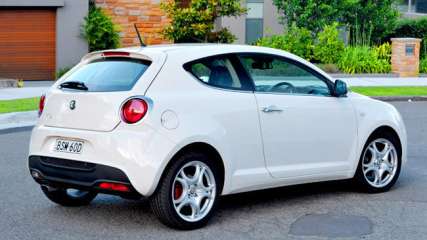
Alfa MiTo twin-clutch on sale
Read the article
By Craig Duff · 15 Dec 2010
Alfa this week showed the strengths of the MiTo twin-clutch six-speed "robotised" transmission and concedes the absence of even a regular torque-converting automatic has cost the company sales since the MiTo launched last year.
In the MiTo's case the latest pair of dual-clutch MiTo models - the TCT and TCT Sport - are much smarter than a regular auto unit. For a start there's three different modes to operate in while still in automatic mode, or the option of self-shifting by pushing the lever left to manual mode or using the steering wheel-mounted paddles.
Alfa predicts the TCT duo will represent 180 units - or more than 70 per cent of the next year's projected 252 sales.
Both TCT models use the company's new "MultiAir" turbocharged 1.4-litre petrol engines fitted with stop-start engine management. It's a necessary but still worthwhile upgrade as European production gears up from Euro IV to Euro V-compliant engines and the effects role through the local fleets.
Alfa's latest engine puts out 99kW and 190/230Nm depending on whether the transmission is in "normal" or "dynamic" mode.
And in most situations the engine is a willing performer once on the boil. The car is allowed to rev to raucous levels in manual mode, but will short-shift even in dynamic mode if it detects only light pedal pressure.
Prices start at $31,990 for the TCT with 17-inch alloys, Alfa's DNA system, fog lights, and climb to $34,990 TCT Sport which adds an alloy kick plate and alloy pedals, climate air-conditioning, auto wipers, rear parking sensors and a carbon-fibre effect dashboard that will invite many to steer in that direction.
MULTI-AIR
Alfa's Euro V compliant 1.4-litre engine is dubbed "MultiAir" not just for its turbocharger but the hi-tech engine itself. The inlet cam has been replaced by an electro-hydraulic array of four solenoids - one for each cylinder - to meter oil flow that in turn adjusts valve lift and timing to match engine speeds and loads with the performance/economy juggling act all. The mechanical cam deals with the two exhaust valves, while a third lobe determines the maximum lift and opening duration of the two inlet valves.
Alfa says the system optimises the stoichiometrical efficiency - how well it completely combusts a given charge of fuel with a given volume of air - of the engine over a wider load range.

Alfa Romeo MiTo TCT 2010 Review
Read the article
By Peter Barnwell · 14 Dec 2010
Alfa Romeo is relaunching its MiTo light car range with a revised four car lineup, featuring a twin clutch (manumatic) transmission on some and other technology as well as an equipment tweak.MiTo has been available here for some time but faces stiff competition from Mini and other brands.The MiTo TCT (Twin Clutch Transmission) is aimed at buyers wanting an auto as well as sporty performance and low emissions and fuel consumption. The best of both worlds.But the MiTo you'd expect to get TCT misses out - the high performance QV remains six speed manual only. Go TCT and it means the least powerful 99kW engine in the MiTo's 1.4-litre, turbo four cylinder, petrol Multi-air engine range.Four versions of MiTo are now offered; 114kW manual MiTo at $29,990, 99kW MiTo TCT at $31,990, 99kW MiTo Sport TCT at $34,990 and 125kW MiTo QV in manual also at $34,990.Alfa says the three versions of MiTo's 1.4-litre Multi-air engine deliver comparable power and torque to other engines of greater capacity. Designed by Fiat, Multi-air technology also garners significantly better fuel economy.Multi-air engines don't have an inlet camshaft instead, a set of electro/hydraulic solenoid (pumps) operates the inlet valves, it is said, more efficiently than any variable cam timing system in existence.Opt for the TCT models and you also get auto stop/start function that further reduces emissions and fuel consumption to as low as 5.5-litres/100km particularly around town.The six-speed TCT system has adaptive shift patterns and is operated like a regular auto with PRND selected on a stick shift that also offers sequential change mode in a parallel Sport gate. Paddles are also provided on the steering wheel.Sport mode defaults back to auto if you fail to utilise the manual system.All three engines deliver strong torque at low engine speeds and pass Euro 4 or 5 emissions regulations. MiTo score a five star Euro crash rating.All four models score Blue&Me audio system, electronic key, aircon, wheel controls, cruise, pollen filter, electric power steering, trip computer and window tint. Wheels are alloy 17 or 18-inch with low profile rubber.All models are fitted with what Alfa calls DNA (for Dynamic, Normal and Allweather - a system that changes settings for the engine, steering, suspension and gear box.The MiTo Sport TCT is speced up to a similar level as the MiTo QV model - without the 125kW engine.MiTo has undeniable character and presence on the street thanks in part to its unusual face and the pert rear end accentuated by a bank of LEDs.It's just that the TCT transmission needed to be on the QV as well as the other models. Go figure.Alfa Romeo MiTo TCTEngine: 1.4-litre Turbo 4-cylinderPower: 99kWTorque: 190Nm/230Nm (Normal/Dynamic)Transmission: 6-speed Twin-Clutch autoWeight: 1170kg




